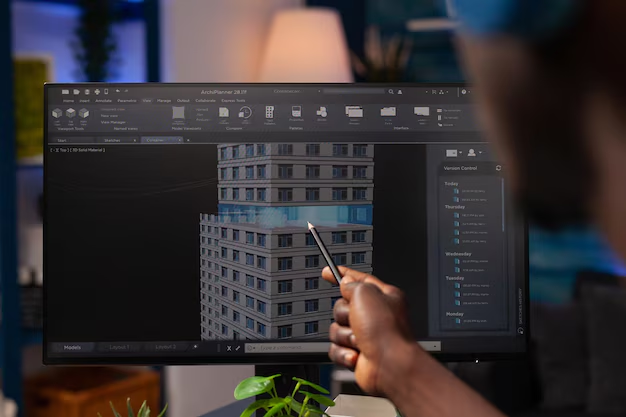Architecture, as both an art form and a functional element, has evolved dramatically over the centuries. Yet, despite the ever-changing nature of design trends, classical architecture continues to influence modern buildings. From ancient Greek temples to Roman arches, the principles of classical design have left an indelible mark on the way we think about and construct spaces. In this article, we explore the enduring appeal of classical architecture and how its timeless designs continue to shape contemporary structures.
1. The Origins of Classical Architecture
Classical architecture, primarily characterized by the architectural styles of ancient Greece and Rome, laid the foundation for much of Western architectural design. The Greeks introduced the three major orders—Doric, Ionic, and Corinthian—which defined the proportions and aesthetic of their columns and buildings. Roman architecture expanded on these ideas, incorporating innovations like the use of arches, vaults, and concrete, which allowed for more expansive and durable structures.
The ideals of balance, proportion, symmetry, and order in classical architecture set the stage for future generations of architects to build structures that were not only functional but also visually harmonious.
2. Key Elements of Classical Design
There are several key elements of classical architecture that continue to influence modern buildings:
- Columns and Pillars: The use of columns, especially the iconic Greek and Roman columns, remains one of the most recognizable features of classical architecture. These columns serve both as structural supports and as decorative elements, lending an air of dignity and elegance to any building.
- Symmetry and Proportion: Classical designs emphasize symmetry, where each side of a building mirrors the other, creating a sense of balance and order. The proportions of classical buildings, such as the ratio of height to width, were carefully calculated to create a sense of harmony.
- Domes and Arches: Romans perfected the use of arches and domes, enabling the construction of grand public buildings, bridges, and aqueducts. These elements continue to inspire modern architects, particularly in the design of civic buildings, museums, and religious structures.
- Pediments and Porticos: The triangular pediment, commonly seen in ancient Greek temples, and the portico (a porch with columns) have been widely adapted in modern designs. These elements evoke the grandeur of classical buildings and remain popular in neoclassical and modern architecture.
3. The Revival of Classical Architecture
Classical architecture experienced a revival during the Renaissance and again in the 18th and 19th centuries, particularly in Europe and North America. During these periods, architects such as Andrea Palladio, Sir Christopher Wren, and Thomas Jefferson turned to ancient Greece and Rome for inspiration, applying classical principles to create structures that exuded authority, elegance, and permanence.
In the 20th century, the neoclassical style continued to influence public buildings, monuments, and government structures, with the White House and the U.S. Capitol being prime examples of classical design elements adapted to modern needs. This revival emphasized the timeless nature of classical design, combining historical principles with new construction techniques.
4. Classical Architecture in Modern Times
Despite the rise of modernist and postmodernist architecture, classical elements have not been abandoned. Today, architects continue to incorporate classical influences into both public and private spaces, blending old-world charm with contemporary functionality.
For example, in city planning and urban design, neoclassical elements are often used in government buildings, courthouses, and monuments to evoke a sense of authority, tradition, and stability. Modern luxury buildings and hotels may also draw inspiration from classical facades, columns, and porticos, using them as decorative motifs while maintaining a modern, sleek interior design.
Many contemporary architects, including Sir David Adjaye, Robert A.M. Stern, and Richard Meier, have blended classical principles with modern materials and construction techniques. The result is a sophisticated fusion that honors the past while embracing the future.
5. Sustainability and Classical Architecture
In an age where sustainability is increasingly important, the principles of classical architecture offer valuable lessons. The use of durable materials, such as stone and concrete, and the focus on creating well-proportioned and energy-efficient spaces can contribute to sustainable design practices. Classical designs often emphasized natural light, ventilation, and thermal comfort, all of which align with modern sustainable building practices.
Additionally, the adaptability of classical elements, such as the use of courtyards, vaulted ceilings, and open spaces, can contribute to energy-efficient building designs. Classical architecture’s emphasis on enduring structures also promotes longevity, reducing the need for frequent renovations or reconstructions, which can have a significant environmental impact.
6. Influence on Interior Design
Classical design principles are not only prevalent in architecture but also in interior design. The idea of symmetry, balance, and proportion is still present in many homes, offices, and public spaces. Neoclassical furniture, ornate moldings, and classical columns can all be found in interior designs that aim to create a sense of timeless elegance.
Additionally, classical motifs like Greek key patterns, floral wreaths, and laurel leaves have made their way into contemporary design, offering a connection to history and tradition while remaining aesthetically relevant.
7. The Enduring Appeal of Classical Architecture
Why does classical architecture continue to have such a lasting impact? It is because of its universal principles—balance, order, and proportion—that resonate with our innate sense of beauty. Classical designs are often seen as symbols of strength, stability, and permanence, and these qualities make them particularly appealing in times of uncertainty.
Moreover, the durability of classical buildings, some of which have stood for thousands of years, demonstrates their lasting relevance and the success of their design principles. These structures remind us of humanity’s ability to create enduring works that transcend time and place.
Conclusion
Classical architecture, with its principles of symmetry, proportion, and balance, continues to influence contemporary design. From grand civic buildings to residential homes, modern architects incorporate classical elements into their work to create structures that are both timeless and relevant. By blending the past with the present, classical architecture offers a bridge between history and the future, proving that great design is always in style.




